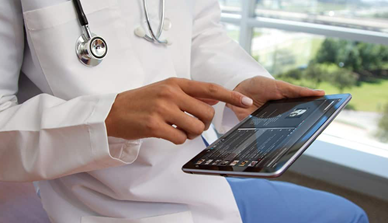How to make employee wellbeing programmes inclusive
Everyone is different. When it comes to employee wellbeing programmes, a one-size-fits-all approach is not enough. Ensuring services appeal to a diverse workforce, a wellbeing programme can be more accessible if products and services are tailored to specific needs.
Improving employee health and wellbeing holistically across key pillars - physical activity, nutrition and mental wellbeing – is only the start. A key question often levelled at health and wellbeing programmes is whether they are truly inclusive and accessible to all.
Employees are also diverse and what motivates one person, might not appeal to another. It differs depending on a range of factors, such as age, state of health, where they are based in the UK and broader socio-economic factors.
Strong engagement across all ages and demographics
Offering the right choice of health and wellbeing benefits is key to driving employee engagement across all age groups and demographics.
The Vitality Programme for example puts a strong emphasis on offering a range of benefits which provide enough choice to appeal to most – if not all – members.
It’s important advisers and businesses don’t make assumptions either when considering appropriate health and wellbeing benefits for their workforce.
It’d be easy to assume for example that benefits such as gym memberships, wearable fitness devices and Healthy Living rewards would be favoured among a younger population. However, our own member findings highlight that, on average, our older members earn more Vitality points per month than under 40s, suggesting they are in fact becoming more health conscious as they get older1.
Accessibility is key
While the benefits and incentives - alongside the brands involved - must be inspiring, they also need to be accessible to all members, regardless of location to ensure engagement can happen anywhere. Especially as many benefits – such as gyms, healthy food shopping and cinemas – rely on physical infrastructure.
Within the Vitality Programme careful consideration is given to these factors. For example, our partnership with PureGym, starting in 2021, added over 300 new gyms to the Vitality gym network alongside Virgin Active and Nuffield Health, meaning more members than ever live within a convenient distance to a discounted gym.
Embracing digitisation
At the same time, with more businesses adopting home or hybrid working models, employees must be able to access health and wellbeing benefits anywhere, on demand.
By giving employees access to a health and wellbeing programme that they can access anywhere, whenever they chose and through the use of smartphone apps and associated technology, the programme can be more integrated into their everyday life.
This leads to higher levels of overall engagement and better health and wellbeing outcomes, as employees are given daily nudges and rewards to make positive lifestyle choices.
We see this play out with Vitality’s Active Rewards and Apple Watch. Over 170,000 Apple Watches have been sold through Vitality since 2015 and evidence shows that they dramatically increase physical activity levels across all demographics and life stages2.
Supporting employees through personalisation
Delivering a health and wellbeing programme that is accessible to all employees is also about adopting a more personalised approach to wellbeing support, particularly for those at a higher risk of illness.
For common lifestyle risk-factors such as smoking or obesity, behaviour change expertise can be harnessed to support employees to make positive changes, based on their own personal needs.
Once a clear picture of someone’s health has been built, for example through an annual health review, data can be used to predict the most important action an individual can take to improve their health.
A personalised recommendation can then be made – alongside access to the right tools and pathways – to make behaviour change far more achievable. Incentivising these actions increases the chance of success even further.
Within the Vitality Programme we call this Next Best Action, launched in 2021 and which has so far yielded extraordinary results.
Providing members with a data-driven recommendation of the most important action they can take to live longer in good health, we’ve found for example that 47% of members that joined the programme stopped smoking at the end of a 12-week programme and 10% of members with type-2 diabetes achieved remission through engaging with a weight-loss programme. 4
With more and more employees rightly expecting their employer to play a role in supporting their wellbeing, as well as wider challenges around the broader health and productivity of workers, delivering an inclusive, engaging wellbeing programme has never been more important.effective and engaging wellbeing programme, alongside access to broader healthcare benefits:
Where to next?
-
Everything is digital these days why not healthcare too?
Whilst the provision of healthcare is clearly far more serious, there’s increasingly no reason why digitisation shouldn’t be embraced within PMI, writes Greg Levine, Vitality’s Chief Operations and Growth Officer.
-
How PMI can unlock employee health and wellbeing engagement
With declining rates of health continuing to cause poor productivity, engaging and supporting employees health and wellbeing has never been more important.
-
Insights Hub
Our Insights Hub brings you our range of adviser content - from video series to articles blogs.
2 Comparison of Vitality engagement data and Britain's Healthiest Workplace data, 2022


